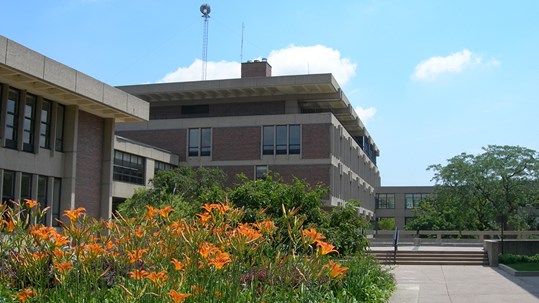Freshmen navigate high school’s challenges, remotely
Online learning complicates an already fraught time

NT website
Facing new challenges, the class of 2024 starts this year off at home instead of the Northfield campus
Normally, the Northfield campus would now be filled with a thousand freshmen, anxiously trying to figure out the quickest way to get to the D building from the B building.
This year is different: these 14- and 15-year-olds are beginning their high school experience from their homes as a result of the Covid-19 pandemic.
Some students, like Sophia Erb-Suciu, are finding it difficult to cultivate friendships in the remote environment.
“Zoom is a very difficult place to meet new people,” Erb-Suciu explained. “Getting to know students in my classes has not been going that great.”
While some students have prior connections from their junior high schools, those coming from smaller schools have found online classes to be especially challenging.
“It’s been extremely difficult to make new friends,” said freshman Suvali Dhar. “Coming from a small school, everyone seems to know each other.”
Advisers have played an even larger role than usual in acclimating their students to the new high school environment.
Freshman adviser and Social Studies teacher Kathleen Tallmadge explained that she tries to be mindful of her students’ needs.
“Some days, my advisees and I talk all together, and sometimes I split them up into breakout rooms. I know Zoom can be draining, so I try to limit the time we’re all on screen together,” said Tallmadge.
Like Tallmadge, adviser Jonathan Lepeksa has prioritized checking in with his advisees.
“[Lepeska] has provided resources for us if we need help in classes,” explained freshman Max Friedman. “He makes sure our first weeks have been going well.”
Academic teachers have also been trying to help freshmen transition in a remote setting, but this hasn’t always been successful.
“About two weeks in, we were getting several hours of homework a night,” explained Dhar. “Some teachers don’t accept late work, even if it was late due to internet issues or other things out of our control.”
Other teachers have had a more positive impact on their students during class time.
“I have had a few teachers use Nearpod and Kahoot to engage us,” said Friedman. “Most of my teachers use breakout rooms often.”
Tallmadge has used the remote setting to make the transition to a project-based curriculum.
“I’ve been wanting to do this for a while–I like the idea of teaching a class that’s less reliant on testing, which obviously isn’t that feasible over Zoom,” explained Tallmadge.
Looking ahead, many freshmen are excited about the prospect of moving to hybrid learning.
“I really want to go back to school because my teachers are all incredible and I think e-learning is difficult,” explained Friedman.
Though excited, freshmen do acknowledge the risks associated with being back on campus.
“I feel nervous about the health risks, but I feel like New Trier has done a pretty good job of taking that into consideration,” said Dhar. “I’m really excited to transition to hybrid.”






































